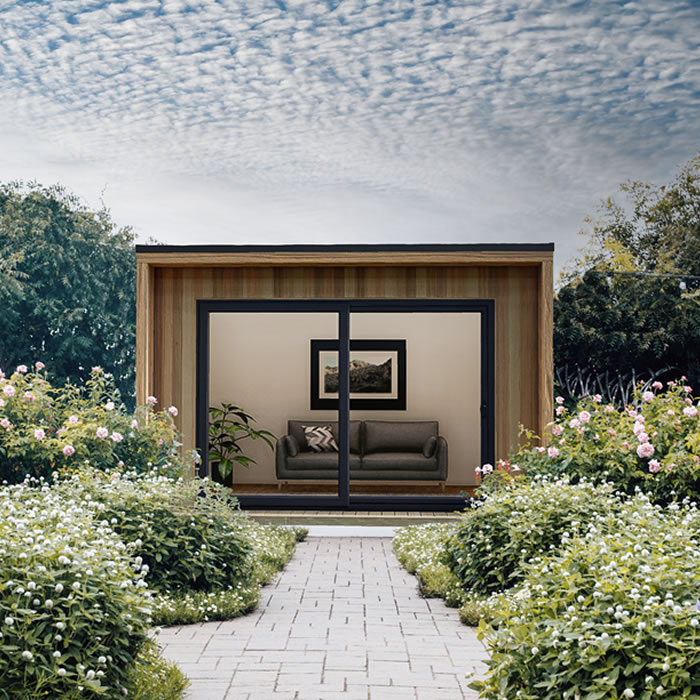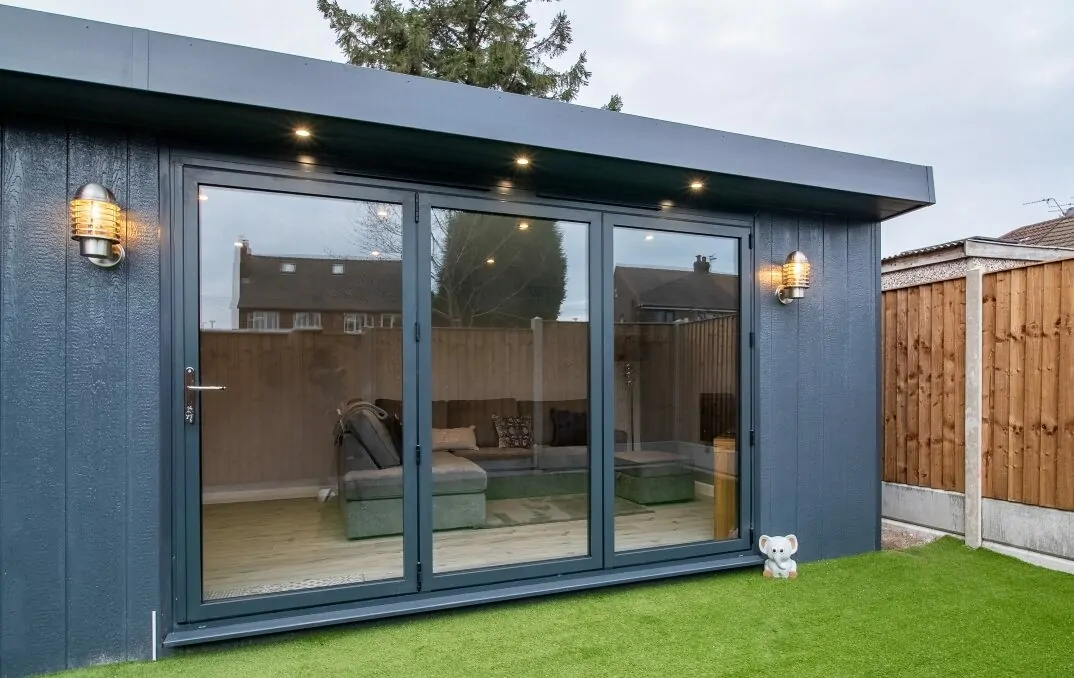Handy Facts For Planning Permission On Garden Summer Houses
Wiki Article
What Planning Permits Are Required For Garden Rooms And Other Structures?
If you are considering building garden rooms or conservatories, outhouses garden offices, or extensions, specific size restrictions typically determine if you require planning permission. Here's a list of the dimensions that may require you to obtain planning permission.
The planning permission is required for an outbuilding detached in excess of 50 percent of the land that surrounds the home (excluding the footprint).
Height Restrictions
Single-story construction: Maximum eaves height must not exceed 2.5 meters. The total ceiling's height must not exceed 4 meters if it has a dual-pitched pitch or 3 meters in the absence of.
Buildings located within 2 metres of the boundary of the property. The maximum Height is 2.5 meters.
Floor Area:
Even the planning approval isn't required, structures with more than 30 square metres could require approval according to the building regulations.
Proximity to borders
If the structure is within 2 meters from a boundary it is usually required to get permission for planning if the structure's height is greater than 2.5 meters.
Building Usage:
Although not strictly a size limitation, the intended use of the gardenroom may affect whether planning permission should be required. If the building's intended use is residential accommodation, or a commercial space, approval for planning is more likely required.
Permitted Development Rights:
Under Permitted Development Rights (which permit for certain kinds of work without the need to submit a complete planning application) Specific size limitations and restrictions apply. These rights are contingent on if the property is situated in a conservation zone or is subject to limitations.
Conservatories & Extensions
In general an extension of one story to the rear of a detached house, maximum depth is 4 meters and for semi-detached or terraced houses it's 3 meters. Under the Neighbour consultation plan, these depths can be increased to 8 metres and 6 meters, respectively.
The maximum height for an extension to the rear with a single story is 4 metres.
Side Extensions
For side extensions, the width should not exceed more than half the width of house that was originally built, and the maximum height should not exceed 4 meters.
Volume Restrictions
In certain areas (such as conservation areas or Areas of Outstanding Natural Beauty) the addition of a building which increases the volume of the home in excess of 10 percent or 50 cubic meters (whichever is greater) may need planning permission.
Front Extensions:
Planning permission is typically required for extensions that extend past the front facing the road that was the initial home.
Contact your local authorities because the rules could differ according to local councils and property conditions. Even if no planning permission is required, approval under the building regulations may still be required for structural integrity or safety reasons. Have a look at the most popular 4 meter by 4 meter room for blog examples including costco garden room, armoured cable for garden room, out house for garden, my outhouse, myouthouse, garden outhouses, do you need planning permission for a garden room, Tring garden rooms, conservatories and garden rooms, small garden office and more.

What Planning Permission Is Required To Build Garden Rooms, Etc. The Context Of Neighborhood Concerns?
If you plan to construct conservatories, garden offices, outhouses or garden offices, the concerns from your neighbors will determine whether planning permission is needed. Here are the key aspects to consider: Overlooking and Privacy:
A permit for planning is required for any new structure that may result in a loss of privacy due to the view of neighboring properties. It will guarantee that the building won't negatively impact the lives of those within the vicinity.
Overshadowing and loss of light
Planning permission is required when a building project is likely cause an overshadowing of adjacent homes or a substantial decrease in lighting. The local authority for planning assesses the impact of sunlight on adjacent homes.
Noise and Disturbance
Planning permission is required to use the extension or garden room when there is a lot of noise (such the use of a home office with clients, or an office or workshop. This will ensure that the noise levels are not too loud and don't disturb your neighbors.
Visual Impact and Character
The size, design, and appearance of the building must be consistent with the aesthetics of the neighborhood. Planning permission ensures that the proposed development is pleasing to the eye and doesn't detract from the beauty of the area.
Boundary Proximity:
The construction of structures near the boundary of a property may require permission to plan, particularly when they're higher than 2.5 meters within 2 meters of the boundary. The reason behind this is to deal with potential disputes and impact on neighbouring properties.
Shared Access as well as Rights of Way
It is essential to obtain planning permission if construction work is expected to impact shared access routes or rights-of way. This will ensure they aren't negatively impacted or blocked.
Oppositions of neighbors
Neighborhood consultation on plans is permissible. The planning authority will take into consideration the views of neighbors when determining whether or not approval is granted.
Impact on Property Values
Although it's not always a primary concern, significant modifications that may affect the value of neighboring homes could impact on the need to obtain planning permission. Local authorities will be aware of these impacts when making a decision.
Covenants and Deed Restrictions:
There may be deed restrictions or covenants on the property which must be adhered to regardless of planning permission. These legal agreements could define what kind of construction may or cannot be permitted that could impact the peace of the neighborhood.
Construction Disturbance:
Planning permission may be granted to address issues regarding disturbances that is caused by construction like noise, dust, and traffic. There may be conditions imposed to minimize the impact on neighbors.
Infrastructure Impact
If the construction puts additional strains on local infrastructures (e.g. drainage parking, roads), planning permits make sure that these effects are evaluated and managed appropriately.
Community Consultation
In some cases a larger community consultation is necessary in certain cases, particularly when the proposed development is significant or controversial. It permits a more democratic process of decision-making because it takes the opinions of the local community into account.
Summary The neighborhood concerns are a major aspect in the approval process of garden rooms, conservatories or outhouses. To prevent a negative impact on the living conditions, privacy and light levels in the area, it is essential that any proposed expansion doesn't adversely affect the neighborhood. Consultation with the neighborhood planner and involving neighbors early in planning can address these issues and facilitate an easier approval. Read the recommended home office heating for more recommendations including my outhouse, Tring garden rooms, do you need planning permission for a garden room, what is a garden room, how to get power to a garden room, what size garden room without planning permission, garden rooms, how to lay decking on soil, garden room vs extension, Tring garden rooms and more.

What Kind Of Permission Will I Require To Construct A Garden For Instance?
Planning to build conservatories, garden office or outhouses? The look and style of the structure will play a significant factor in determining if planning permission is necessary. Here are some important factors to consider.
Planning permission may not even be required if the structure proposed is within your permissible development rights. There are certain specifications regarding design and appearance which must be met.
Dimension and scale:
The size and scale of the new structure must be proportional to the property's existing size and the surrounding buildings. Planning approval is required for buildings which exceed the dimensions outlined in allowed development rights.
Mass and Height
The scale of existing structures and adjacent properties should be represented in the mass and height. Planning permission is usually needed for buildings that are too tall or unbalanced with the surrounding area.
Materials and finishes
The finishes and materials chosen should compliment the property and surrounding buildings. Planning permission could be required if proposed materials are not compatible with the local character and design.
Design Harmony
The style and design of the building must be in harmony with the architectural style of the existing structure. The style of the structure to be constructed must be in harmony with local features and aesthetics.
Roof Design:
The design of your roof must match the architectural style of the house you're working on and the structures around it. A planning permit could be needed for a roof style that isn't in keeping with the local style or appearance.
Fenestration (Windows and Doors):
The layout and design of the door and windows must match the home and the surrounding area. Planning permission could be required if the proposed fenestration isn't in harmony with the local style and appearance.
Treatment of Facades
The facade treatment should be harmonious with the surrounding properties and existing buildings. If the proposed style of the facade isn't in line with the local style and character, planning permission might be required.
Landscaping, Surroundings, Environments and Landscapes
The landscaping surrounding the structure should be in harmony with the existing building and property. Planning permission may have to be sought out if the landscaping isn't in keeping with the local character.
Visual Impact
The visual impact of the new structure's visual impact on the surrounding area should be minimal. A planning permit could be required for a building that is a negative impact on the area around it.
Heritage and Conservation Areas
If the property situated within an area designated as heritage sites or for the preservation of the natural beauty of it, design and aesthetic standards might be more stringent. A permit for planning could be required for the construction of a structure that does meet the requirements.
Architectural and Planning Guidelines:
Local planning authorities typically have strict rules regarding design and appearance. Planning permits may need to be sought in the event that a proposed structure does not comply with the guidelines.
In short, planning permission for garden rooms, conservatories outhouses, gardens offices or extensions often hinges on the design and appearance of the structure being proposed. Consult the local authority for planning as early as possible in the planning phase to make sure that the design adheres to the local aesthetic and character guidelines, and also to determine the need for planning permission. Follow the top rated planning permission for garden rooms for site recommendations including garden room permitted development, garden office electrics, outhouse for garden, garden room, garden office hertfordshire, conservatories and garden rooms, Tring garden rooms, garden rooms, garden room conservatory, garden rooms and more.
